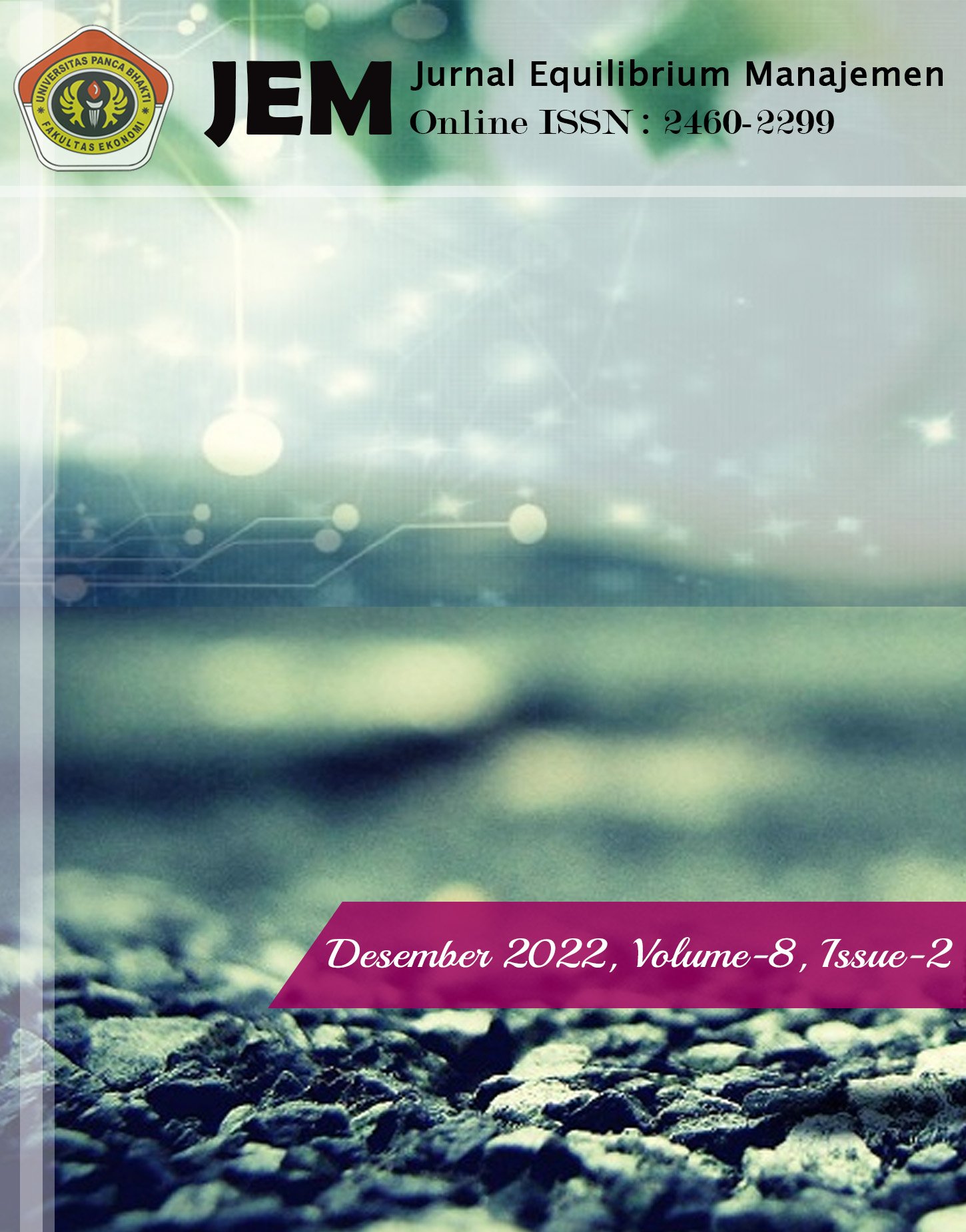PENGGUNAAN MODEL GRAVITAS HUFF UNTUK MENGESTIMASI NIAT BERKUNJUNG KE PUSAT PERBELANJAAN
Isi Artikel Utama
Abstrak
Model Gravitas Huff dikenal dengan fungsinya sebagai penentu lokasi yang mengandalkan
daya tarik lokasi yang dihasilkan dari perbandingan antara atribut lokasi tersebut dengan hambatan
yang harus dilalui untuk mencapai lokasi tersebut. Daya tarik lokasi dinilai dari atribut-atribut yang
dimiliki lokasi tersebut, sedangkan hambatan yang harus dilalui adalah jarak tempuh dan waktu
tempuh yang dikorbankan oleh seseorang untuk mencapai lokasi tertentu. Penelitian ini
menggunakan Model Gravitas Huff untuk mengestimasi niat berkunjung ke pusat perbelanjaan
dengan menggunakan dua jenis data pada aspek daya tarik dan hambatan. Selanjutnya hasil
penelitian dianalisis dengan menggunakan prinsip chi square untuk melihat hasil pengaruh data
daya tarik terhadap niat berkunjung dan hasil pengaruh hambatan terhadap niat berkunjung.
Rincian Artikel

Artikel ini berlisensi Creative Commons Attribution-NonCommercial 4.0 International License.
Copyright (c) 2021 Jurnal Equalibrium

This work is licensed under a Creative Commons Attribution-NonCommercial 4.0 International License.
Jurnal Equalibrium is licensed under a Creative Commons Attribution-NonCommercial 4.0 International License.
Referensi
Anselmsson, J. (2016). Effects of shopping centre re-investments and improvements on sales and
visit growth. Journal of Retailing and Consumer Services, 32, 139-150.
Blumberg, B., Cooper, D., & Schindler, P. (2014). EBOOK: Business Research Methods.
McGraw Hill.
Huff. D. L., & Black, W. C. (1997). The Huff model in retrospect. Applied Geographic studies,
(2), 83-93.
Huff, D. L. (1964). Defining and estimating a trading area. Journal of marketing, 28(3), 34-38.
Leslie, J., Macia, M. G., Luli, S., Worrell, J. C., Reilly, W. J., Paish, H. L & Oakley, F. (2020).cRel orchestrates energy-dependent epithelial and macrophage reprogramming in fibrosis.
Nature metabolism, 2(11), 1350-1367.
Lilien, G. L., Kotler, P., & Moorthy, K. S. (1992). Marketing models prentice-hall. Englewood
Cliffs, NJ.
Mutya Paramita Pratita. (2019). “Pengunaan Model Gravitas Huff Untuk Mengestimasi Daya
Tarik, Niat, dan Frekuensi Berkunjung Ke Pusat Pembelanjaan” dalam Tesis. 23, 1-96.
Reilly, W. J. (1931). The Law of Retail Gravitation. New York: Wilihm J. Reilly Co.
Shafiee & Es-Haghi. (2017). Mall image, shopping well-being and mall loyalty.
Singh & Prashar. (2013). Factor defining shopping experience: an analytical study of Dubai.
Konishi, H., & Sandfort, M. T. (2003). Anchor stores. Journal of Urban Economics, 53(3), 413-
Biswas, A., Pullig, C., Yagci, M. I., & Dean, D. H. (2002). Consumer evaluation of low price
guarantees: the moderating role of reference price and store image. Journal of Consumer
Psychology, 12(2), 107-118.
Chebat, J. C., Sirgy, M. J., & Grzeskowiak, S. (2010). How can shopping mall management best
capture mall image?. Journal of business Research, 63(7), 735-740.
Kushwaha, T., Ubeja, S., & Chatterjee, A. S. (2017). Factors influencing selection of shopping
malls: an exploratory study of consumer perception. Vision, 21(3), 274-283.
Jacobsen, J. P., & Kooreman, P. (2005). Timing constraints and the allocation of time: The effects
of changing shopping hours regulations in The Netherlands. European Economic Review,
(1), 9-27.
Wu, C. S., Wu, K. Y., Lo, Y. R., Huang, Y. W., Tsai, Y. T., Li, Y., & Tsai, H. J. (2018).
Psychotropic use and risk of stroke among patients with bipolar disorders: 10-year
nationwide population based study. Journal of Affective Disorders, 226, 77-84.
Mild, A., & Reutterer, T. (2003). An improved collaborative filtering approach for predicting
cross-category purchases based on binary market basket data. Journal of Retailing and
consumer Services, 10(3), 123-133.
Larsen, V., Shelton, R., & Wright, N. D. (2015). Shopping center attitudes: an empirical test of
predictive attributes. Academy of Marketing Studies Journal, 19(2), 93.
Baker, J., Parasuraman, A., Grewal, D., & Voss, G. B. (2002). The influence of multiple store
environment cues on perceived merchandise value and patronage intentions. Journal of
marketing, 66(2), 120-141.
Mehrabian, A., & Russell, J. A. (1974). An approach to environmental psychology. the MIT
Press

